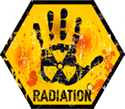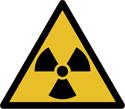Indoor Air Quality or IAQ, according to the EPA, refers to the air quality within and around buildings and structures, especially as it relates to the health and comfort of building occupants. Understanding and controlling pollutants indoors can help reduce your risk of indoor health concerns.
Here in Western North Carolina, our two primary IAQ concerns focus on our area's natural presence of above average levels of MOLD and RADON. As long term area residents, we at Mountain Environmentals have recognized through our own personal health observations plus those of family and friends, whose allergic reactions have ranged from annoying to severe, that maintaining good Indoor Air Quality is essential.
 MOLD - It's everywhere! The term is "ubiquitous". Outside on leaves and wood, mold is good. Acting as one of nature's nutrient recyclers, it helps break down organic matter thus preventing a buildup of such which in turn helps sustain our healthy, balanced forest ecosystem we all enjoy.
MOLD - It's everywhere! The term is "ubiquitous". Outside on leaves and wood, mold is good. Acting as one of nature's nutrient recyclers, it helps break down organic matter thus preventing a buildup of such which in turn helps sustain our healthy, balanced forest ecosystem we all enjoy.Inside however is another matter altogether. Mold that is allowed to take hold and grow inside is NOT good, as it can over time for its human occupants (and pets too), cause in most of us through its release of countless spores and production of mycotoxins and Microbial Volatile Organic Compounds (MVOC's), a number of health related issues. These can range from moderate to severe respiratory ailments to skin and eye problems and even worse, neurological disorders and according to some reports, even cancer. The effects on children, the elderly and those with asthma or other compromised or weakened immune systems can be even more intense. Click here for a short list of Common Molds, Mycotoxins & Health Effects.
 To make matters worse, some molds and fungus actually consume as a food source the organic material they take hold on (known as the substrate) , potentially destroying it. Wood, drywall, paper, cotton, leather, carpeting and of course food, etc. are great inside substitutes for what molds find naturally, outside. The endless supply of spores lying about need only a little moisture to germinate and proliferate as anything above 65% relative humidity creates a highly supportive environment. That being said, the goal is to maintain a maximum indoor RH of 50-60%, preferably closer to 40% (which in turn will keep dust mite populations down, as they thrive above 50%). The EPA recommends 30-60% however we know that without a dehumidifier in the summer, below 50% is tough to maintain. After RH is under control, we need to pay attention to adequate filtering and proper ventilation or air movement, including outside air exchange. With most mold and mold spores ranging in size from 3-30 microns (though not typical, some can be as small as 1 micron), using an air filter in your HVAC system with a Minimum Efficiency Reporting Value (MERV) rating of "8" will go a long way to filtering out most annoying particulate matter, as they are effective down to 3 microns - Now, while it might sound prudent to install a filter that captures even smaller particles, the more restrictive the filter, the more strain you place on your HVAC fan motor, potentially shortening its life, and reducing air flow, so check with the manufacturer or your HVAC installer for recommendations.
To make matters worse, some molds and fungus actually consume as a food source the organic material they take hold on (known as the substrate) , potentially destroying it. Wood, drywall, paper, cotton, leather, carpeting and of course food, etc. are great inside substitutes for what molds find naturally, outside. The endless supply of spores lying about need only a little moisture to germinate and proliferate as anything above 65% relative humidity creates a highly supportive environment. That being said, the goal is to maintain a maximum indoor RH of 50-60%, preferably closer to 40% (which in turn will keep dust mite populations down, as they thrive above 50%). The EPA recommends 30-60% however we know that without a dehumidifier in the summer, below 50% is tough to maintain. After RH is under control, we need to pay attention to adequate filtering and proper ventilation or air movement, including outside air exchange. With most mold and mold spores ranging in size from 3-30 microns (though not typical, some can be as small as 1 micron), using an air filter in your HVAC system with a Minimum Efficiency Reporting Value (MERV) rating of "8" will go a long way to filtering out most annoying particulate matter, as they are effective down to 3 microns - Now, while it might sound prudent to install a filter that captures even smaller particles, the more restrictive the filter, the more strain you place on your HVAC fan motor, potentially shortening its life, and reducing air flow, so check with the manufacturer or your HVAC installer for recommendations.HOW DOES THE PROBLEM START? - Most mold problems and issues stem from initial water infiltration into the structure. This typically occurs through a roof or plumbing leak, an HVAC drain problem, improperly sealed windows, cracks in the foundation or any other situation where water has gotten in and not dried, as it only takes a few days in a damp environment for mold spores to germinate and start colonizing. Less than a week later spore production occurs and the cycle begins again. More importantly if the cause is not tended to  immediately, it exacerbates the situation, being well understood that simply cleaning up or painting over the mold does little good without addressing the underlying water problem that caused it in the first place. This type of or lack of action will most certainly see the mold return along with continued destruction of the substrate.
immediately, it exacerbates the situation, being well understood that simply cleaning up or painting over the mold does little good without addressing the underlying water problem that caused it in the first place. This type of or lack of action will most certainly see the mold return along with continued destruction of the substrate.
 immediately, it exacerbates the situation, being well understood that simply cleaning up or painting over the mold does little good without addressing the underlying water problem that caused it in the first place. This type of or lack of action will most certainly see the mold return along with continued destruction of the substrate.
immediately, it exacerbates the situation, being well understood that simply cleaning up or painting over the mold does little good without addressing the underlying water problem that caused it in the first place. This type of or lack of action will most certainly see the mold return along with continued destruction of the substrate. RADON - It too is all around us. Although EPA studies have shown that radon is present outside in all 50 states, the natural ongoing decay of the rocks and soil comprising the base of our incredible mountains here produces among the highest levels in the U.S. This odorless, colorless & tasteless radioactive gas however dissipates rapidly outside where it is of virtually no concern.
RADON - It too is all around us. Although EPA studies have shown that radon is present outside in all 50 states, the natural ongoing decay of the rocks and soil comprising the base of our incredible mountains here produces among the highest levels in the U.S. This odorless, colorless & tasteless radioactive gas however dissipates rapidly outside where it is of virtually no concern. Just like with mold though, inside is another story. Radon gas typically enters a structure through cracks and unsealed joints and openings in a basement slab or up through a crawl space, and even through well water where the gas is released when the water is turned on. Without proper ventilation, especially in geographical areas with higher concentrations, the potential for creation of adverse conditions in our living spaces runs high. Radon that is allowed to collect inside our homes, schools and other places where we and our families spend the majority of our indoor time, can through radon's natural radioactive decay process over time, cause well documented, well studied, serious health issues - the EPA attributes to radon exposure as many as 21,000 lung cancer deaths per year, second only to smoking!
 GOT A NEW HOME? That's great, however a good/bad situation has been created through improved building materials and construction techniques used on today's newer homes. While helping them to be more airtight, if measures aren't taken that address adequate fresh air exchange, a better sealed home only helps in allowing this toxic gas along with other indoor particles and pollutants to collect and multiply.
GOT A NEW HOME? That's great, however a good/bad situation has been created through improved building materials and construction techniques used on today's newer homes. While helping them to be more airtight, if measures aren't taken that address adequate fresh air exchange, a better sealed home only helps in allowing this toxic gas along with other indoor particles and pollutants to collect and multiply.
WHAT CAN YOU DO? - The bottom line is this - The air inside your home can and needs to be controlled by you. Ignoring the need for this is to ignore the countless well documented health effects that a loss of this control causes. If there is any doubt as to whether your indoor air has been, or is currently being compromised, for your own peace of mind your first step is to schedule an affordable, thorough on site IAQ Test and Inspection visit by one of our Industry Certified IAQ Specialists.
When the inspection is complete, you'll be provided with a comprehensive industry compliant report, covering both interior and exterior components, plus lab test results (when the situation warrants those tests), to help determine the weak areas in and around your home as they apply to the potential infiltration or presence and levels of these health affecting toxins and particles in the air that you and your family may be breathing.
 PLEASE NOTE - While thought to be done mainly in conjunction with Home Inspections related predominantly to Real Estate transactions (for whom we do these tests as well), the EPA in estimating that 1 in 15 homes have above average radon levels has recommended that EVERY home in the U.S. be tested for radon, with special attention given to schools. Those structures that test at or above the EPA's action level of 4.0pCi/L (1.3pCi/L is the average indoor level) may warrant secondary testing and possible mitigation. Click here to view two actual reports - one above, and one below the action level. Be sure to look at the hourly graphs that shows how much these levels can fluctuate during the course of a day. For more radon terms, definitions & info, click here.
PLEASE NOTE - While thought to be done mainly in conjunction with Home Inspections related predominantly to Real Estate transactions (for whom we do these tests as well), the EPA in estimating that 1 in 15 homes have above average radon levels has recommended that EVERY home in the U.S. be tested for radon, with special attention given to schools. Those structures that test at or above the EPA's action level of 4.0pCi/L (1.3pCi/L is the average indoor level) may warrant secondary testing and possible mitigation. Click here to view two actual reports - one above, and one below the action level. Be sure to look at the hourly graphs that shows how much these levels can fluctuate during the course of a day. For more radon terms, definitions & info, click here.As far as mold goes, the nose knows! Any damp, musty or otherwise "off color" odor in your home, and/or any past or present water leaks, again due to roof, plumbing, HVAC or foundation and other structural issues, even if there is no detectable odor, NEEDS to be investigated, period. Furthermore if you can see it, make no mistake, you need to deal with it, as it isn't going away by itself.
Know this too - there are currently no limits of mold contamination defined or set by the EPA, such as in spore count levels. Numerous mold species exist, well over 500,000 as a matter of fact. Of those hundreds of thousands that do exist on the planet, mycologists have identified some 100 that produce toxic effects in humans, with black mold (Stachybotrys Chartarum) being the most health effecting. In absence of limitations, however, it is generally accepted that an indoor spore concentration several times greater than, or consisting of spores other than those found in outdoor air should warrant further action. Determining this along with the types found requires the inspector to take air samples of both indoor and outdoor levels and compare the laboratory analysis and results of both.
 IMPORTANT - Last but not least, it is certainly worth mentioning that since Testing and Inspections are all we do, our services are completely unbiased, our conclusions based solely on our results as to the state of your IAQ. Should follow-on work need to be done along the lines of repair, removal or mitigation, we at Mountain Environmentals can provide you with contacts for various companies and individuals that may assist you further.
IMPORTANT - Last but not least, it is certainly worth mentioning that since Testing and Inspections are all we do, our services are completely unbiased, our conclusions based solely on our results as to the state of your IAQ. Should follow-on work need to be done along the lines of repair, removal or mitigation, we at Mountain Environmentals can provide you with contacts for various companies and individuals that may assist you further.Mountain Environmentals
Certified Residential & Commercial
IAQ Testing and Inspection Specialists
Certified, Experienced, Equipped & Insured

